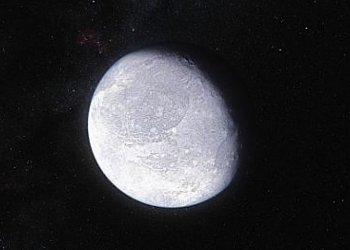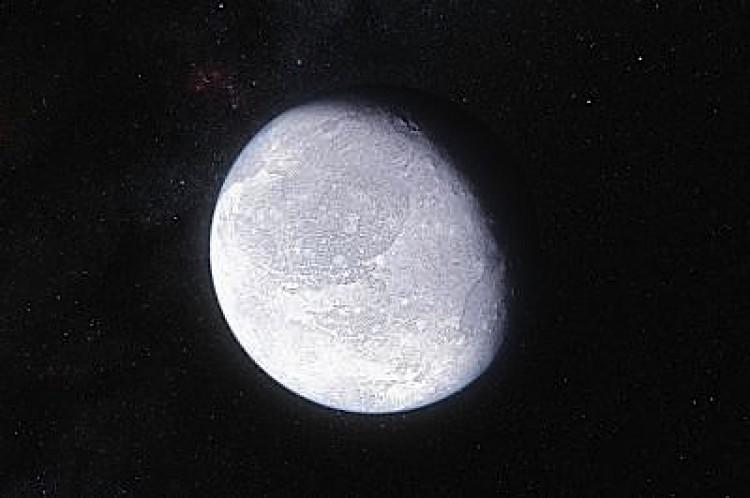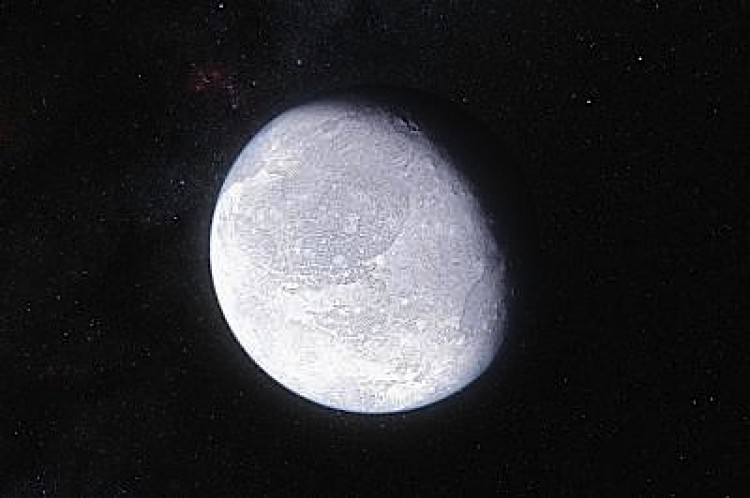Pluto Finds a Twin in Dwarf Planet Eris
When faraway Eris blocked the light of a star beyond it during a rare occultation event in November 2010, astronomers were able to accurately measure the shape and size of this dwarf planet, which was identified as a large object in our solar system in 2005.

Artist's impression of the distant dwarf planet Eris. New observations show that Eris is smaller than previously thought and almost exactly the same size as Pluto. ESO/L. Calcada
|Updated:






